It should be to the surprise of none that Peter Jackson, Philippa Boyens, and Fran Walsh’s experiment of adapting The Hobbit into a film trilogy has not been a unanimous artistic success. Sure, The Hobbit: An Unexpected Journey crossed the $1 billion threshold in worldwide gross, and despite opening 13% lower than Unexpected Journey The Desolation of Smaug is predicted to at least come close to replicating that due to overseas sales. So, these things are practically printing money, and they are visually gorgeous, mostly well-acted, and certainly enjoyable viewing experiences. However, they simply are not on the same level as The Lord of the Rings trilogy.
Despite their best intentions, it was always a horrible idea to adapt a 300-page children’s book into three films encompassing nearly 9 hours of film. The counter-argument is that they are actually adapting both The Hobbit and J.R.R. Tolkien’s Appendices from the end of The Return of the King which lay out the entire history of Middle Earth. This way they can actually show us where Gandalf keeps going off to all those times he just disappears since in the actual novel The Hobbit we have no idea due to only seeing what Bilbo sees. Yet even then their Hobbit films continue to feel over-stuffed with story padding. The Desolation of Smaug is mostly an improvement in that area over An Unexpected Journey, but it is a film which still takes way too long to get going and then ends far too soon. Here are some things which felt unnecessary to us or at least didn’t make sense:
SPOILERS AHEAD FOR DESOLATION OF SMAUG & THE HOBBIT NOVEL
1. Tauriel is Kind of Awesome, But What They Have Her Doing Is Not
If you’ll pardon the expression, The Hobbit and Lord of the Rings novels are basically sausage fests. There’s a bunch of dudes making incremental progress on their journey until they suddenly get there pretty quickly. That doesn’t leave much room for female characters or romance, with perhaps the greatest potential romance being the homoerotic tension between Frodo and Sam (some see it; I don’t). This is not to say that Tolkien couldn’t write compelling female characters. After all, Eowyn’s stance in front of the Witch King in Return of the King is about as girl power as it gets, and one of the most powerful beings in the entirety of the story is Galadriel.
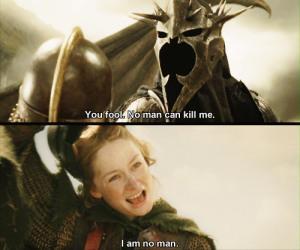
Eowyn, paving the way for the Katniss Everdeens of the world
However, Tolkien just didn’t bother to make much room for women in his fictional universe. So, Jackson, Philippa Boyens, and Fran Walsh had to compensate in The Lord of the Rings by upping Arwen’s screentime, giving her actions originally performed by a male character in the novels. They also heavily relied upon the Return of the King Appendices to add even more tragedy to her romance with Aragorn.
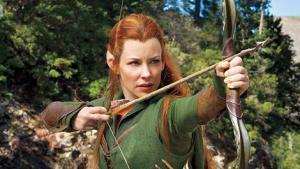
Evangeline Lily as Tauriel
The Hobbit is even more bereft of female characters. So, with Desolation of Smaug they decided to just create an entirely new one, Tauriel (Evangeline Lily). They didn’t even have to stretch too hard to do it as the dwarves do get placed in prison by the wood elves in the story. What if the captain of those keeping guard of the prison just happened to be a woman? Some have objected to the insertion of Tauriel into the story whatsoever. The bigger question is why they bothered to create a badass she-elf who is just as crafty with a bow and knife as Legolas (Orlando Bloom) only to then saddle her with a love triangle. Even Lily doesn’t like it:
In an interview with Yahoo Movies, Lily explained how she made Jackson promise before she signed on the dotted line that her character wouldn’t simply end up in a love triangle.
Yet here she is torn between Legolas and the handsome dwarf Kili (Aidan Turner). But why does the film even need this element whatsoever? You could argue that it is but a plot device to get Tauriel and Legolas out of their home and into Laketown, her following Kili’s trail after discovering he has been poisoned without realizing it and Legolas tagging along for protection. However, you could just as easily get Tauriel and Logolas to Lakewood without turning Kili into a mansel in dstress. On multiple occasions, Tauriel laments the intransigence of Thranduil, arguing that the elves need to take a more active role in engaging with the world or else the war building on the outside will ultimately engulf them before they can respond. She could simply then be tracking the orcs and dwarves to see what they’re up to. Legolas, frankly, does not even need to be in the story at all other than serving as nostalgia and one leg of a triangle.
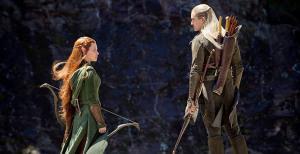
One or both of these characters probably don’t even need to be in these movies, but Legolas seems the least essential
The cynical answer is that they were simply attempting to appeal to the female demographic, adding romance to a story which originally has none. However, in interviews the filmmakers have explained that the inspiration was actually the Gimli-Galadriel dynamic from Lord of the Rings in which he that lovable dwarf goes in Lothlorien an elf-hating fiend and walks away deeply in love with Galadriel. They felt they didn’t do that dwarf-elf affection justice the first time around, and concocted a completely new scenario to explore that dynamic. Their second effort at it with Tauriel and Kili is not a failure, necessarily. With the coming hostilities between the elves and dwarves in the third movie, Tauriel is a way to bridge the gap between the two. However, if they’re going to just add completely new characters and material to the story it better be amazing, and this ain’t that.
2. Are You Kidding Me With That Ending?

Desolation of Smaug ends so abruptly the audience at the screening I attended seemed to unanimously respond with incredulous laughter, one person shouting, “Oh, come on!” That’s actually kind of good in that it means we all wanted to see how this was going to end, even if we already read the book/appendices and have guessed where this headed. However, it’s also bad in that Desolation of Smaug ends up being all rising action with no climax.
One of the great sources of solace I took in my initial worries over the announcement that they were going to make three movies instead of two out of The Hobbit was that second movie would definitely end with the death of Smaug. Then, in the form of the entirety of An Unexpected Journey and first two hours of Desolation of Smaug it was a very, very long journey getting to Smaug in the first place. It may not have been completely worth it, but Smaug is a stupendeous creation, easily one of the finest CGI creations yet realized in a Lord of the Rings/Hobbit movie. Benedict Cumberbatch’s digitally enhanced vocal performance is chilling, all sly and foreboding. In fact, I was relatively certain I was going to miss him once he was killed, but I couldn’t wait to see it happen. And then….nothing. The movie just flat out stops, Bilbo lamenting, “What have we done?” as a seriously pissed off Smaug descends upon Laketown announcing himself as the arrival of death.
This is an incredibly similar ending to that of Harry Potter: The Dealthy Hallows: Part 1, which ends on a downote of the heroes having failed since the ultimate evil of the story has attained a weapon of doom. There is no resolution or closure – the story just stops. However, that felt more like allowing the audience several months to simply catch their breathe whereas Desolation of Smaug takes so long to finally get going showing us the dragon but not the dragon’s death makes all of the extra padding feel all the more extraneous.
3 BTW, How the Heck is Smaug So Up to Date On Current Events?

During his introductory sequence with Bilbo in the Lonely Mountain, Smaug emerges not merely as a simple physically imposing, ginormous dragon but is also instantly the type of engaging villain who is several steps ahead of the protagonist. It’s captivating how quickly we realize he knows exactly what’s happening,but is letting Bilbo keep up the charade because he finds it amusing. Smaug has already deduced that Bilbo is a thief sent to attain the Arkenstone for Thorin, using this knowledge to imply that Thorin clearly values the Arkenstone more than he does Bilbo’s life. He even ominously describe a greater darkness on the horizon, alluding to Sauron.
However, most of this does not actually make any sense. The implication is that Smaug has been hibernating in the mountain for more than a hundred years, unseen by anyone for most of that time. So, how is it that he is so up to date on current events? How does he know about the imminent return of Sauron? He does he even know Thorin’s (“Oakenshield”’s) name let alone what Thorin is looking for? From the context of the dialogue, we are meant to believe that much of it has simply been deduced by Smaug, who references having long since expected the presumptive king of the dwarves to return to challenge him. Plus, maybe because he’s evil he has a subscription to the Evil & Friends newsletter keeping him up to date on Sauron. However, how would he even receive such a newsletter since the mountain is completely sealed?
4. Bard - Far Too Convenient Backstory?

Luke Evans as Bard
Luke Evans is fantastically brooding as Bard, a minor presence in the novel who is mostly distinguished by [NOVEL SPOILER] killing Smaug with the last quiver of his arrow [END NOVEL SPOILER]. Here, not only have they expanded his background considerably they’ve also massively expanded upon the entire story behind Laketown. In the process, they completely waste screentime with Stephen Fry as a corrupt, controlling leader of Laketown who seems at one point as if he is about to break out into song like a Disney villain describing the stupid working class. They then establish Bard as being in opposition to Fry’s character, making Bard a revolutionary figure of some kind. To top it off, they thought it would be cool if it turned out Bard’s father had failed to kill Smaug all those years ago just as Thorin’s father and grandfather’s were the cause of Smaug’s intrustion in the first place, i.e., their stockpiling of gold. This is all set-up to make us root for the now tragically heroic Bard once he kills Smaug in the third and final film. However, it’s because of the narrative having to slow down and explain to us who these people are that the forward momentum drags its feet so much that we actually end this movie without a proper climax.
5. There’s No Emotional Through-Line This Time Around
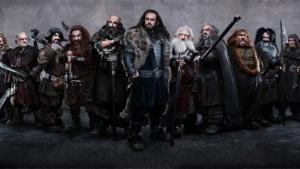
The primary story of An Unexpected Journey involves Bilbo Baggins coming to terms with the quest he has been sort of tricked into by Gandalf. The story ends with Bilbo delivering a nice-enough speech explaining how his desire to see home inspires him to continue assisting Thorin and his dwarves as he sympathizes that they have no home. Plus, Thorin embraces Bilbo, abandoning his doubts as to Bilbo’s worth. Desolation of Smaug shifts its focus in its opening scene to Thorin, and there are clear attempts to establish how he is becoming corrupted by his thirst for the Arkenstone. However, it’s all foreshadowing with no pay-off and no conclusion. Bilbo is somewhat cast aside, granted a brief but nice scene detailing how the ring is beginning to corrupt him.
6. Re-Writing Tolkien
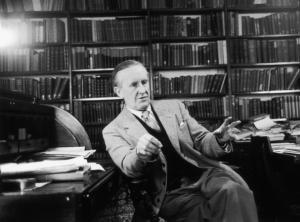
Those who criticize Jackson and company for re-writing The Hobbit in their adaption should probably cut them a little more slack. Why? Tolkien did the same exact thing. For example, in the original printing of The Hobbit Gollum’s ring is not that big of a deal. In this first version of the story, Gollum actually bets his ring on the outcome of his riddles in the dark with Bilbo. When Tolkien’s publisher requested a sequel in 1937 they weren’t nearly specific enough. So, Tolkien gave them The Silmarillion, which they suffered the misfortune of reading. They rejected it, and had to be more specific, telling him, essentially, “No, we meant a sequel more about the hobbits.” Tolkien then wrote The Lord of the Rings, at which point he realized Gollum’s simply losing the ring to Bilbo in a bet made no sense anymore. So, by the time of The Hobbit’s second edition in 1951 the story was altered to the version we now know featuring Bilbo finding Gollum’s ring in the cave, and then stealing it from an incensed Gollum after their game of riddles. Tolkien wasn’t done, though. In 1960, he started rewriting the story to better match the tone of The Lord of the Rings. The publisher made him stop because his new version sacrified the original’s the signature quick pace and adorably light tone of the original.
Jackson & company are basically doing that for Tolkien now, and after having gloriously adapted the three Lord of the Rings novels they have essentially become the new modern co-authors of The Lord of the Rings and The Hobbit. Some of what they are doing so far with The Hobbit films can be seen as actual improvements dictated by a need to raise the narrative stakes and make clearer connections to the Lord of the Rings. Plus, some of their new material is simply coming straight out of the Appendices with a couple of their own embellishments. Unfortunately, most of their additions have not felt like completely necessary story elements but instead rather obvious attempts to eat up screen time and stretch this all out, making more out of The Hobbit than is really there.
Oh, enough with the ranting. I’ve said my piece. It’s your turn. Go. … Well, I mean go to the comments section, not literally go.
If you like this, check out our other “Nitpicking” Articles
- Nitpicking Man of Steel – 4 Things We Liked & 4 Things We Didn’t
- Nitpicking Iron Man 3 – 5 More Things That Bothered Us
- Nitpicking Iron Man 3 – The 8 Things That Bothered Us

